Core 2, Professor Jennifer Leung, MIT
Studio Coordinator Ana Miljacki
The phenomenology of space may have taken a backseat in architectural discourse, as surface conditions still provoke a strong anxiety of decoupling the feelings provided by a building from the essence of the architectural project, yet this hesitation is prohibitive to understanding different architectural spaces as embodying different characters. Space as character, of course, has an extensive foundation in the framework of postmodern theory, spurring architectural projects focused on language and interpretation of signification in creating spaces that were both characters and caricatures. But part of the postmodern inheritance is the very definition of individuality that seems so obvious today; group identities were stripped to their bare stereotypes, and personalities reconstructed from complex histories that resist categorical determination. If identities are constructed in relation to what we identify with, then now they float between associations that change over time and across locations.
If this is all too theoretical, look to the YMCA. Once associated with names that advertised its solidarity as a service (young, men, Christian), it has now in an effort to expand its reach and update its branding shortened its name to “the Y.” This change comes not just for the sake of expanse (to women, to children, to the elderly, indiscriminate of religion) but also because the very foundations of its namesake identities are obscure—what does it mean, for instance, to be young? to be male? to be Christian?
Yet the same name that is dubiously offensive in a pc-obsessed liberal society served a very admirable intent when the organization was first founded. The YMCA provided young men, often coming from farmlands into an industrializing city in hopes of new life, with the facilities and support for success. The name reinforces this objective of the association during a time in which group identities were understood to facilitate rather than inhibit constructing character. The YMCA promoted productivity, and collective identity was intimately associated with societal theories for a better, more productive, utopian world.
Today, the Y can still promote productivity with a similar aspiration toward something better (although with a notably less romanticized belief in the possible future). New identities, however, demand not only a rebranding of “the Y,” but a new understanding of its facilities. The Y must provide a place where individuals—young, old, cisgender, transgender, interreligious, atheistic—can construct their own characters not by conforming to the regulations of one group but by sharing interests with many. This diversity must be promoted with a nonheirarchy, in which the young child who wants to learn pool maintenance feels no classification that separates her from one who will find future occupation as a computer programmer. The architecture in which they learn can reinforce this egalitarian dream through spaces that all have a certain distinct character, with differentiated nonhierarchical architectural worlds that allow flow between programs and across traditional class distinction. Characters can be something more than historicity and signification; they can work programmatically (as well as visually register) both the autonomy and the overlap of the identities that can be created at the Y. Like its early days, the Y can attempt to promote both production and humanity.
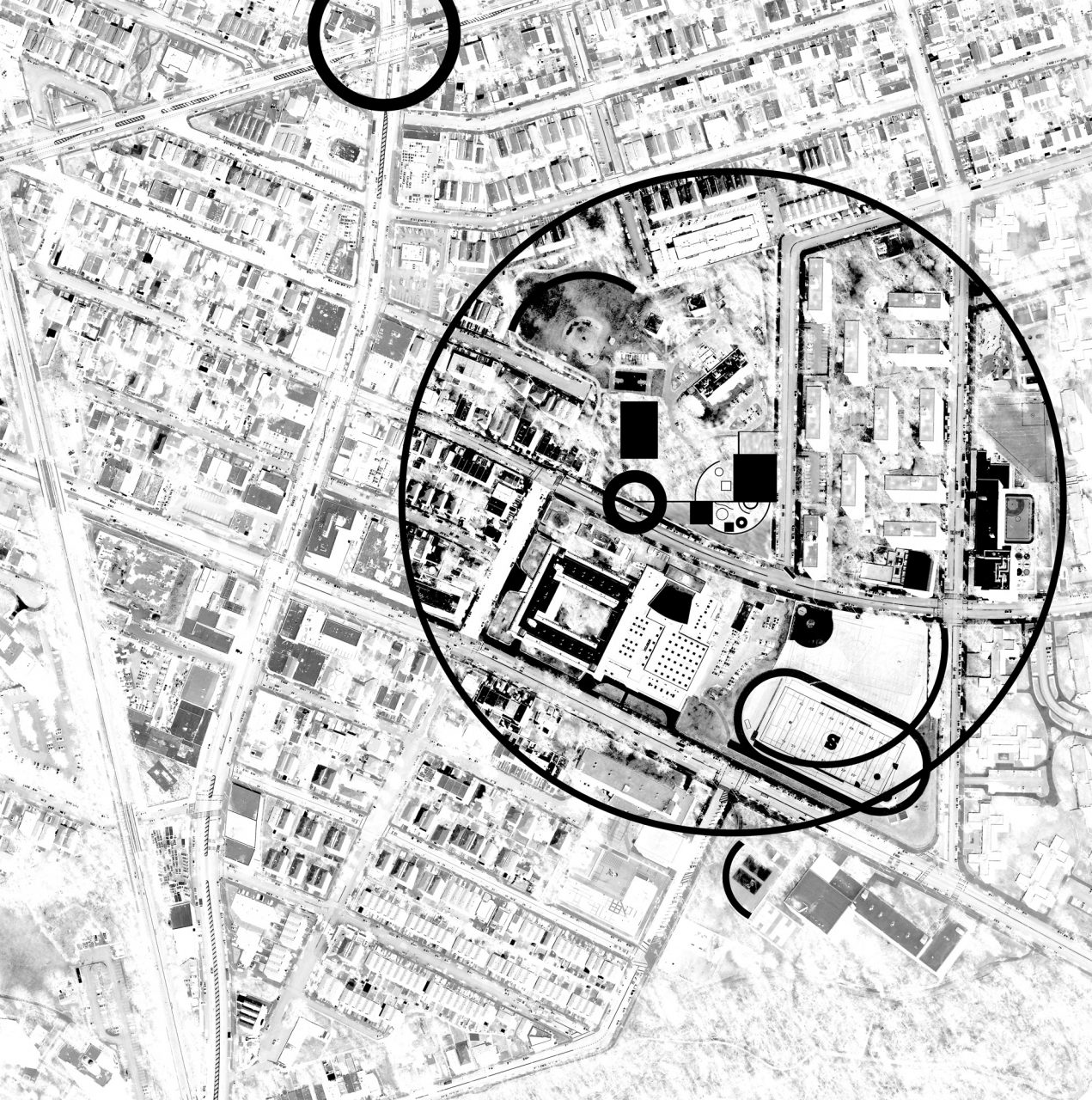 site plan
site plan 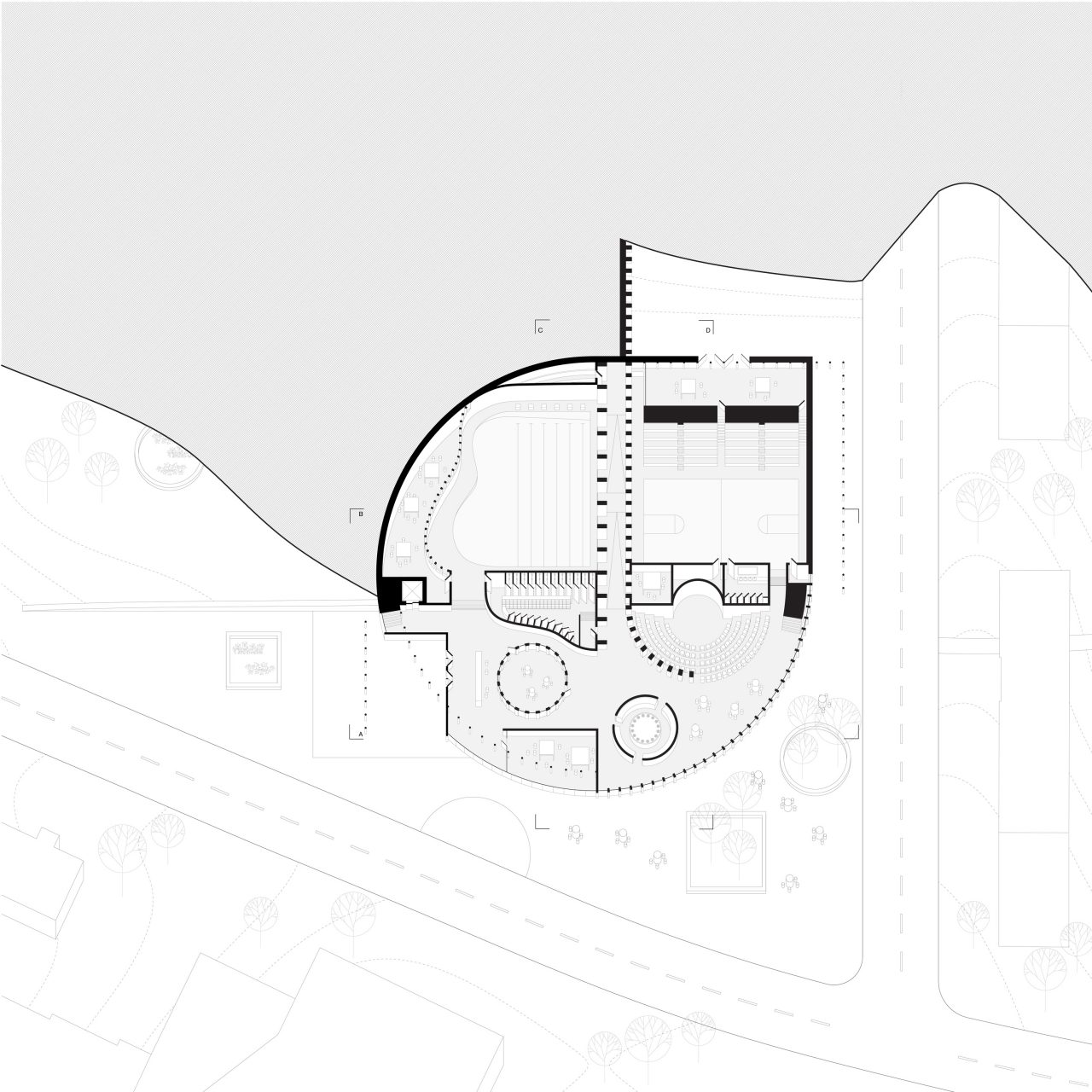 first floor plan
first floor plan 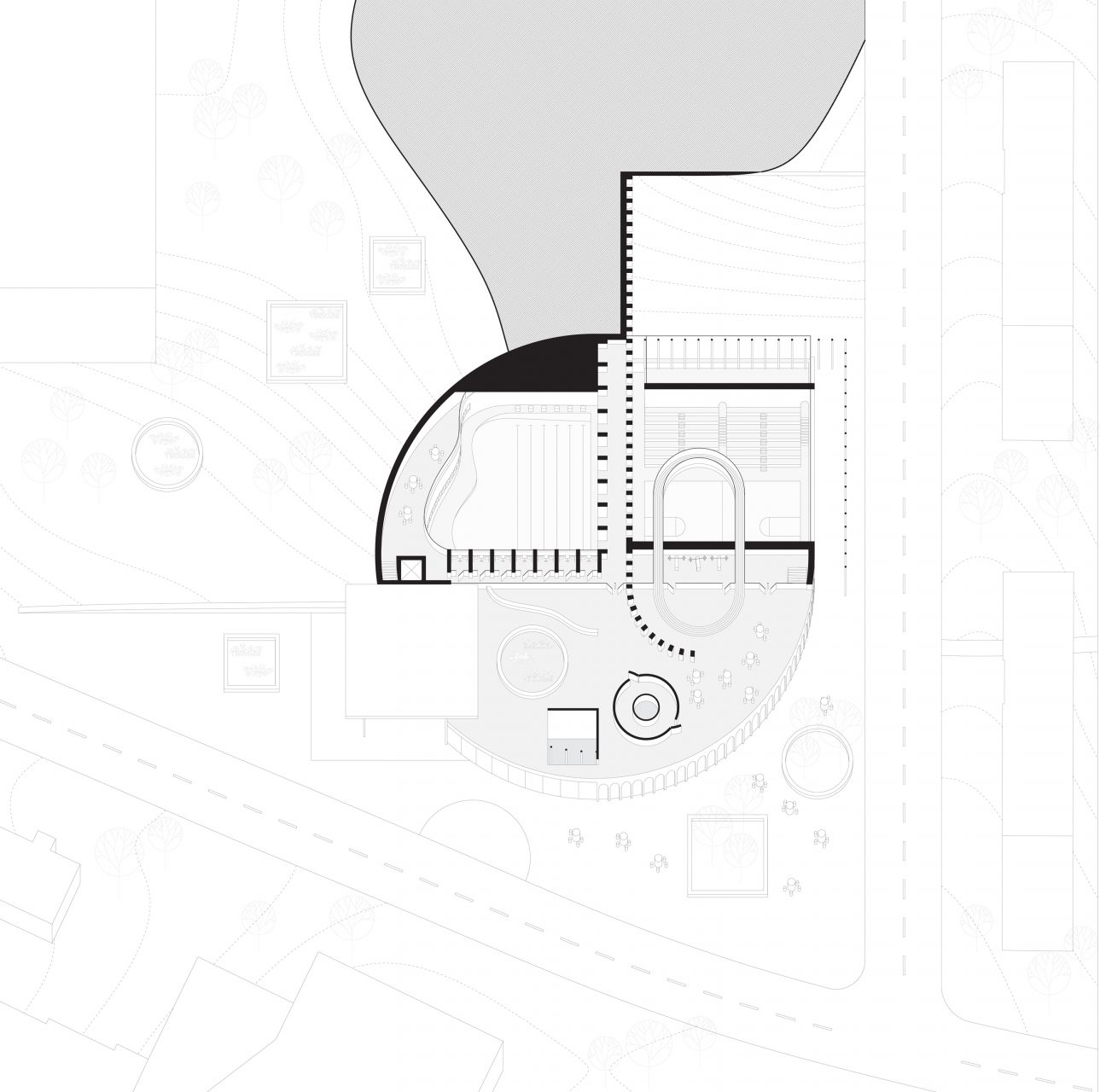 second floor plan
second floor plan 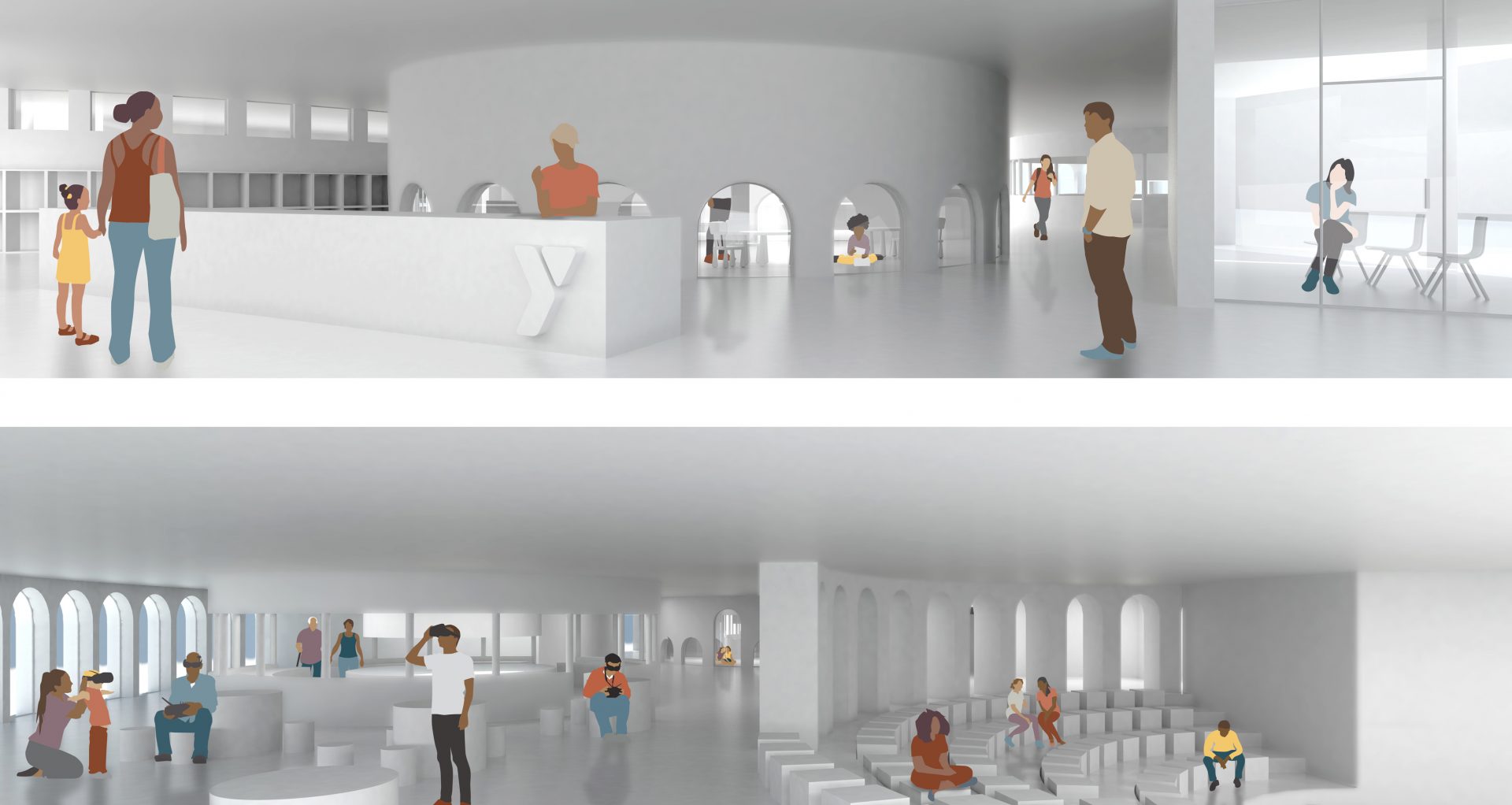 reception and auditorium
reception and auditorium 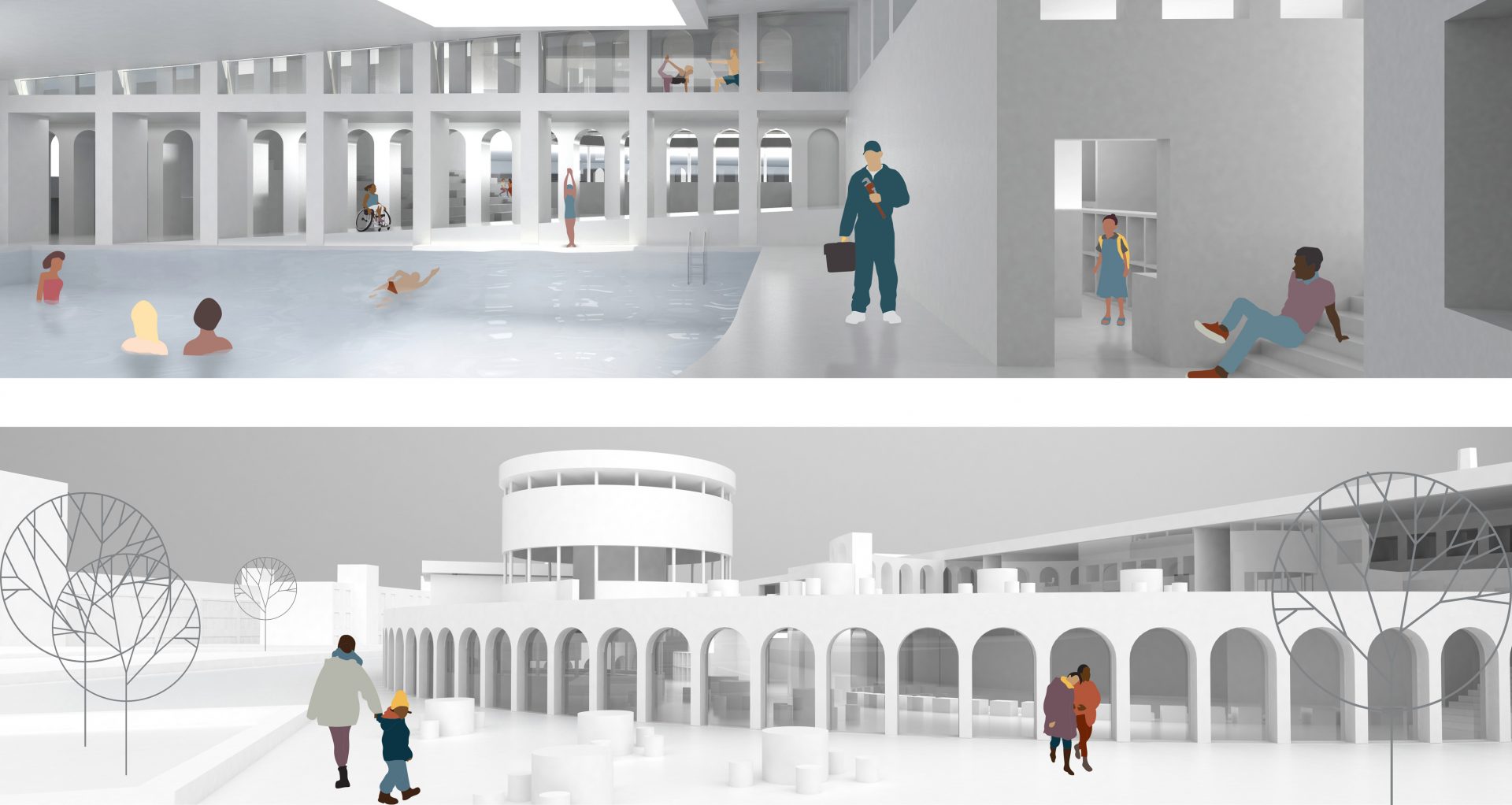 pool and exterior
pool and exterior 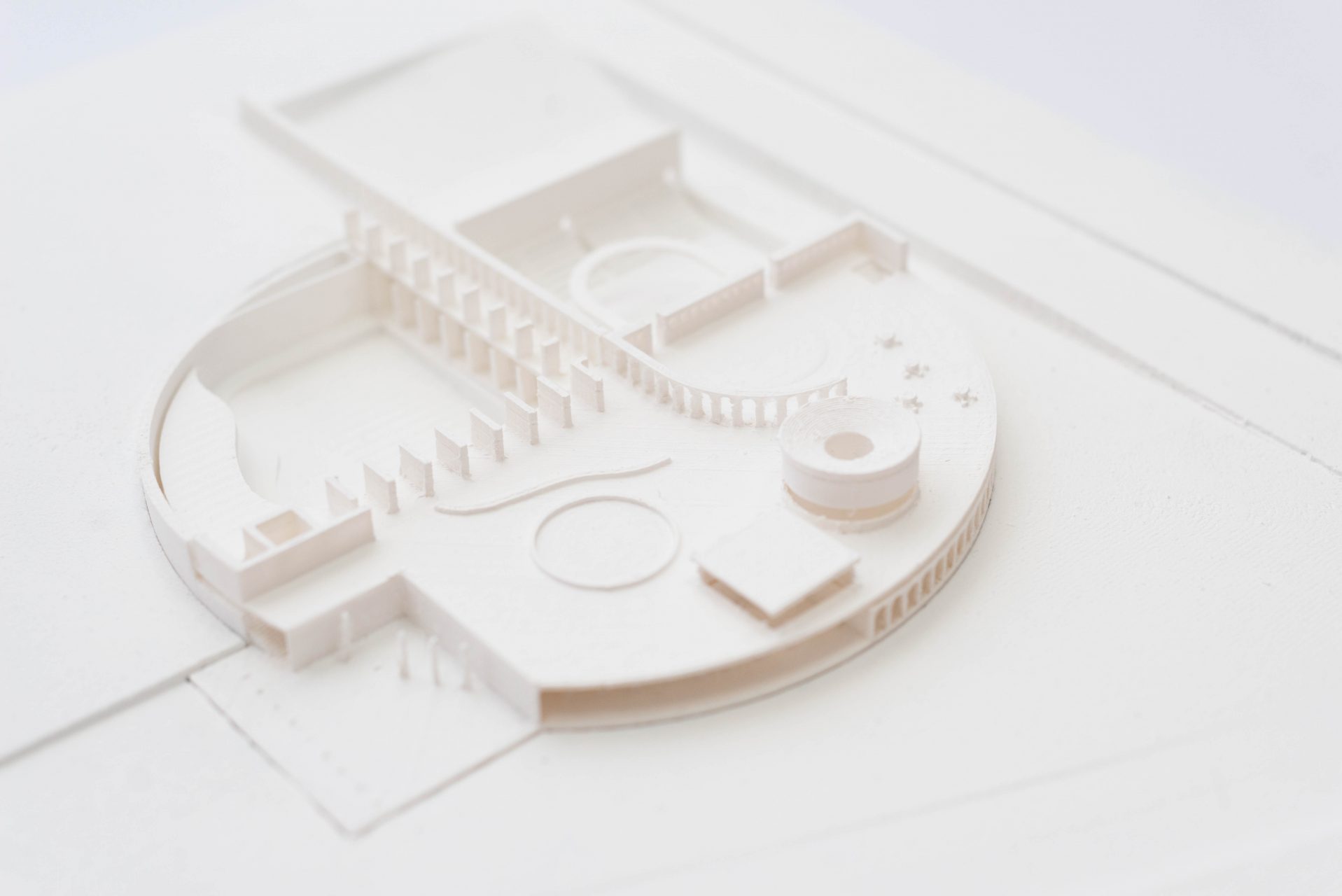 rooftop model
rooftop model 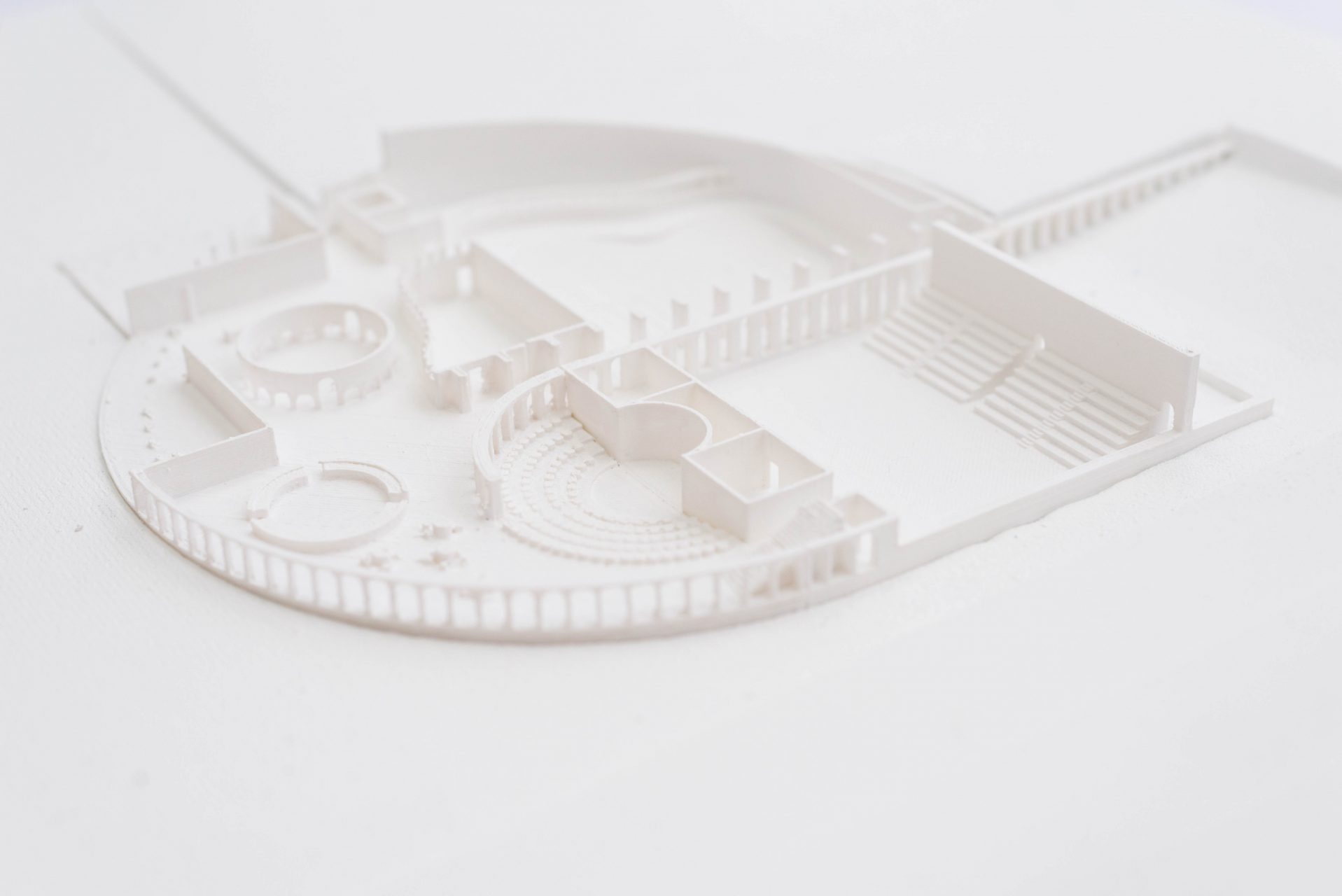 first floor model
first floor model